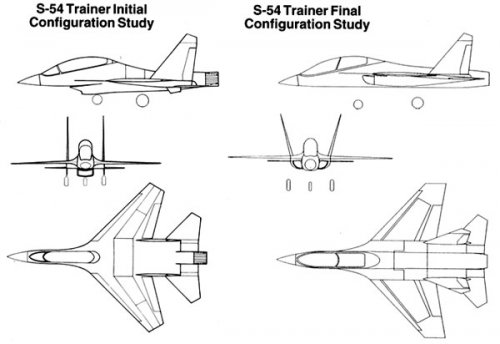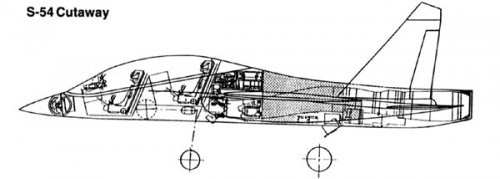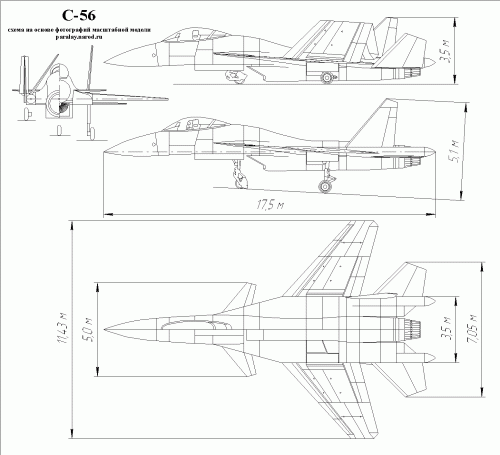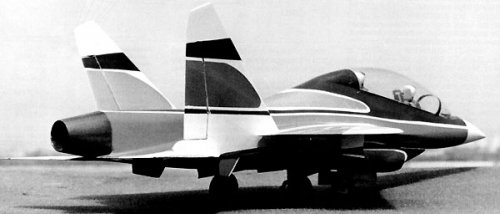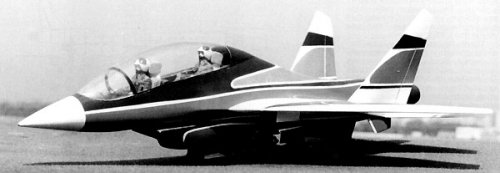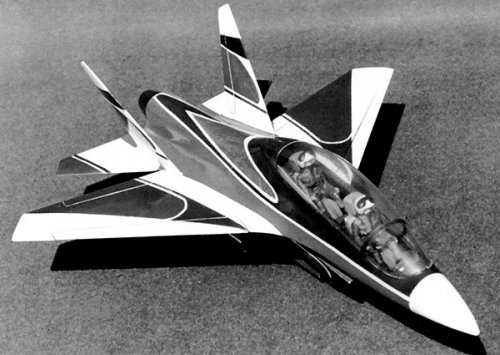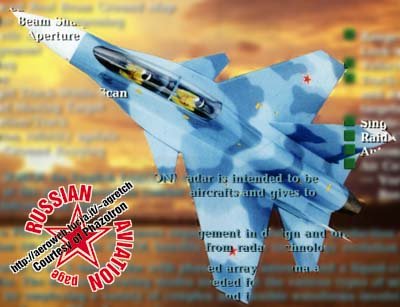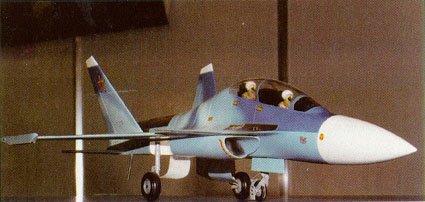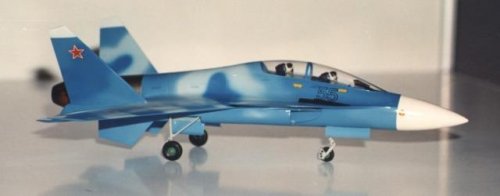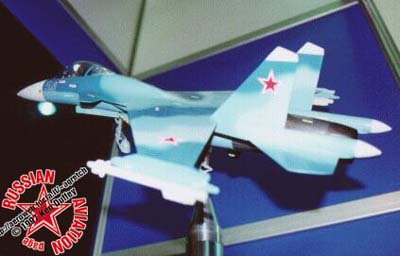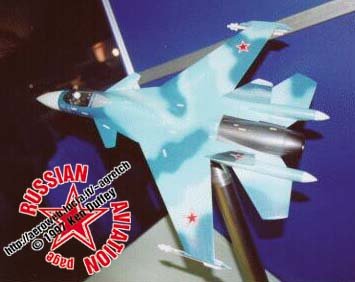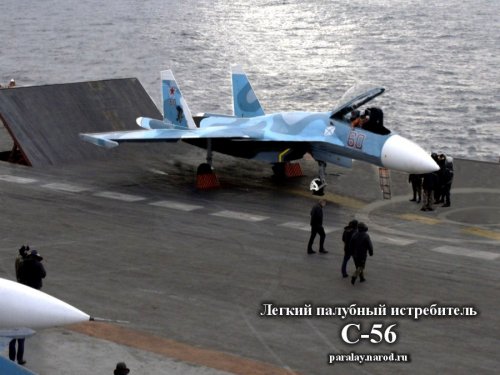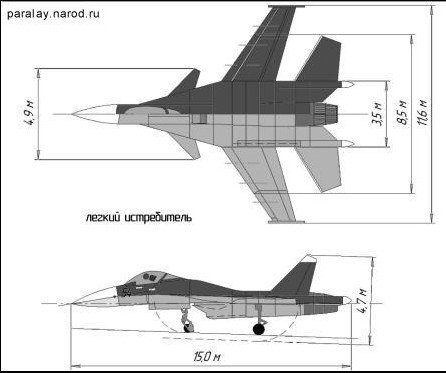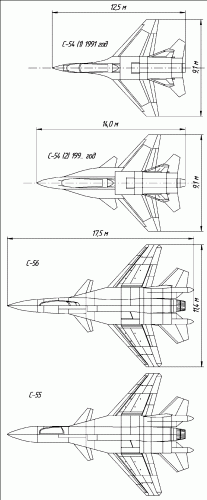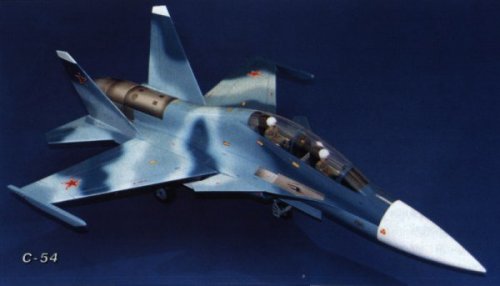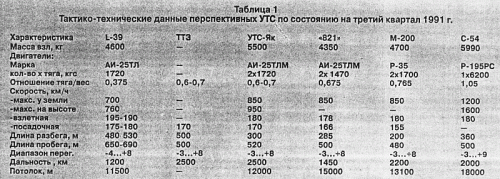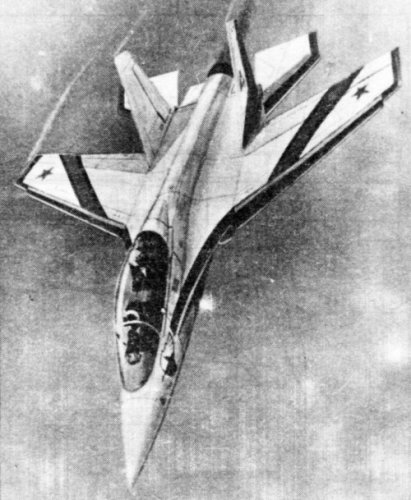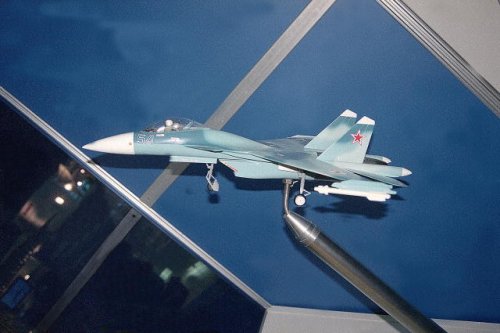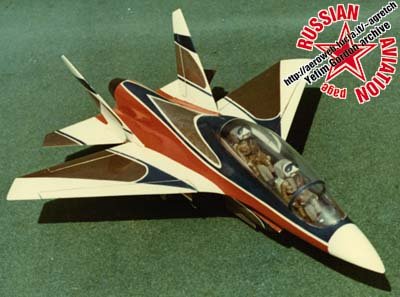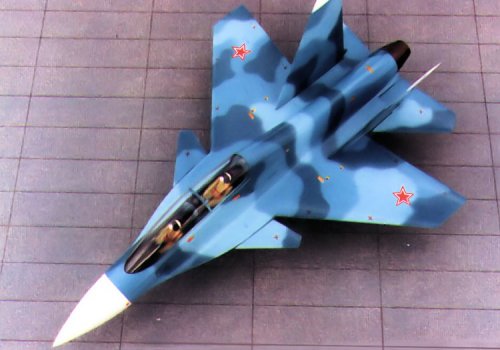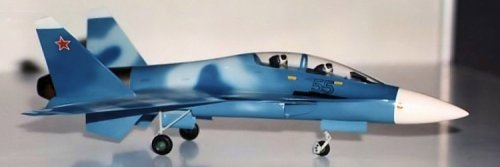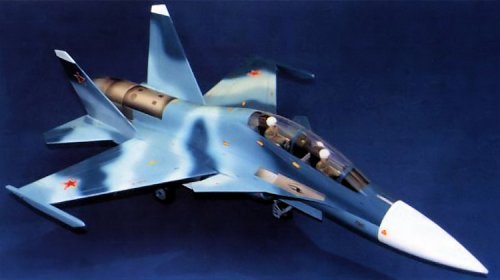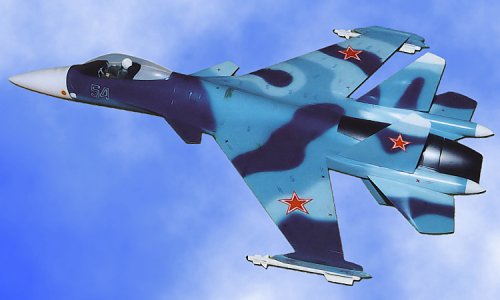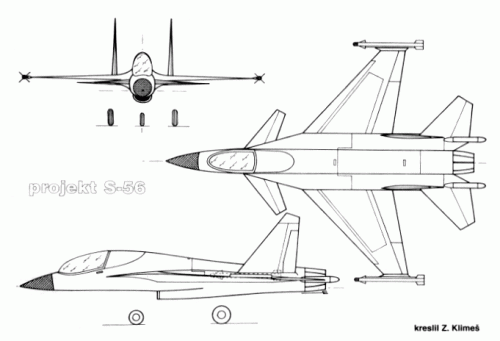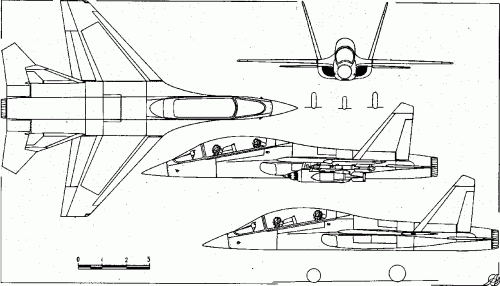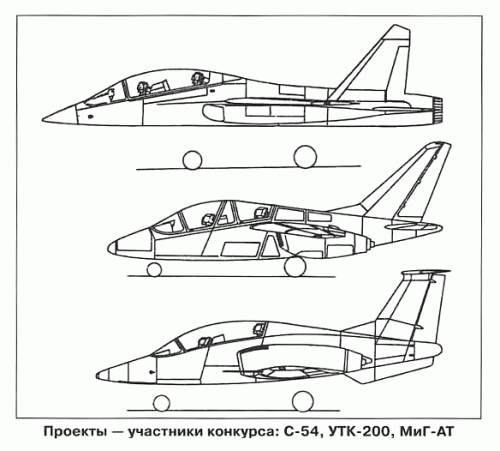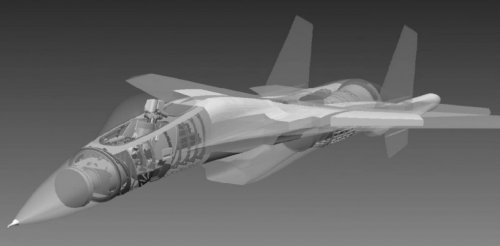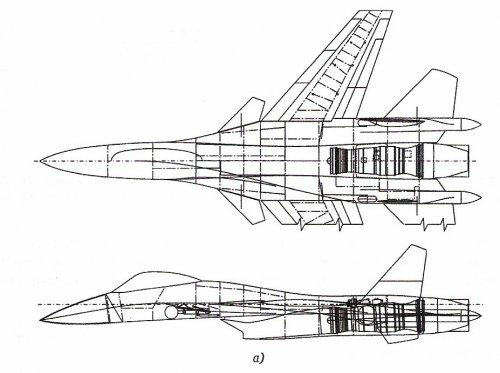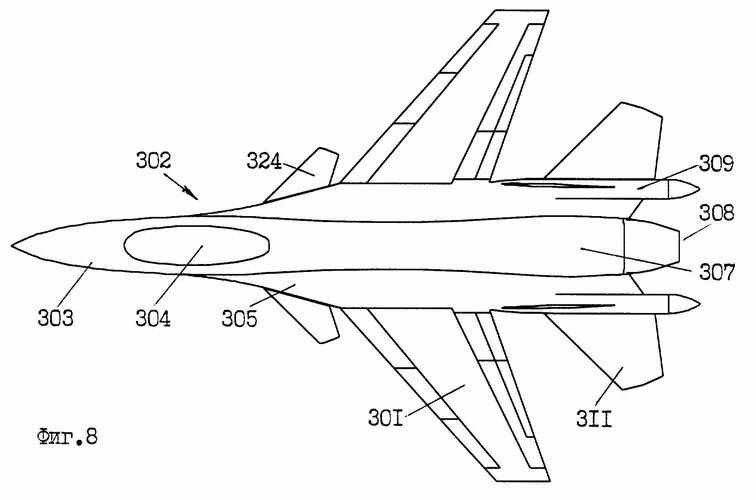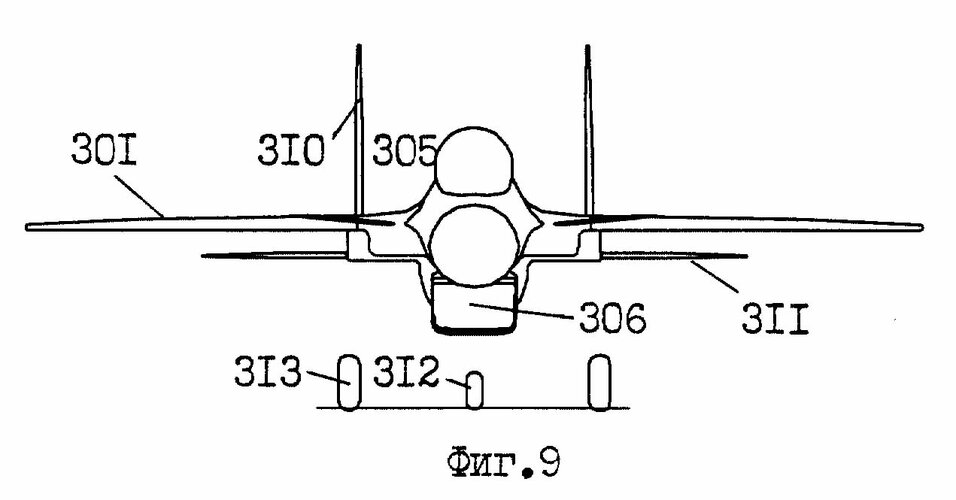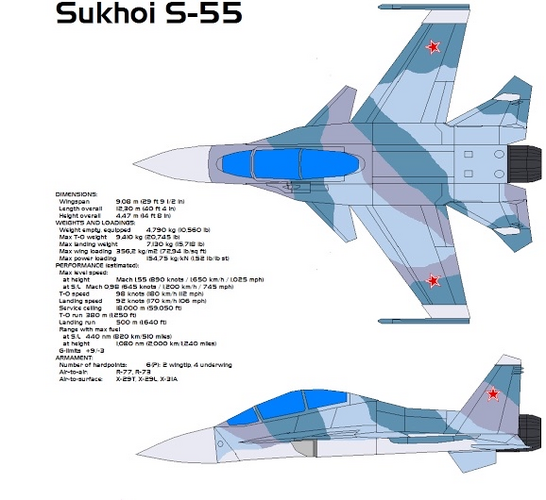Sukhoi S-54 (1995)
Type: Two-seat advanced jet trainer and light combat aircraft.
Program: Began as one of designs by five OKBs to meet official Russian requirement to replace Aero L-29 and L-39 Albatros; program launched 1990; configuration refined 1992; avionics and system units tested in Su-25 and Su-27.
Design features: Described by Sukhoi as scaled-down development of Su-27, with speed, operating altitude and maneuverability commensurate with combat aircraft; unconventional all-swept mid-wing configuration; twin outward-canted fins mounted at wing trailing-edges; engine air intakes under wing roots; retractable tricycle landing gear.
Flying controls: Fly-by-wire as Su-27, via flaperons, all-moving tailplane and rudders; leading-edge flaps; airbrake; preprogrammable to make aircraft easier to fly, dependent on pupil's ability; optional 'panic button' to return aircraft to straight and level flight from any altitude, and push-button spin recovery; optional playback system to record student's every move in flight.
Landing gear: Retractable tricycle type; single wheel on each unit; mainwheels retract inward, nose wheel forward; no brake-chute.
Power plant: One Soyuz/Tumansky R-195FS turbojet; modified from Su-25 power plant; rated at 41.2 kN (9,260 lb st) dry and 60.8 kN (13,670 lb st) with afterburning; optional alternatives could include F404, RB199, and PD33, with minimum airframe modifications. Two internal fuel tanks, total capacity 1,660 kg (3,660 lb). Single-point pressure fueling.
Accommodation: Two crew in tandem, on K-36 zero/zero ejection seats, under blister canopy; rear seat raised.
Avionics: Avionics and cockpit interior same as for current and advanced tactical aircraft. Automatic flight control system. Weather radar standard.
Armament: Wingtip mounts for two close-range IR homing air-to-air missiles; two hardpoints under each wing for air-to-air and air-to-surface guided weapons.
Dimensions external
Wing span: 9.08 m (29 ft 9.5 in)
Wing cord at root: 4.64 m (15 ft 2.75 in)
Wing cord at tip: 1.18 m (3 ft 10.5 in)
Length overall: 12.30 m (40 ft 4.25 in)
Height overall: 4.47 m (14 ft 8 in)
Tailplane span: 5.49 m (18 ft .25 in)
Wheel track: 2.52 m (8 ft 3.25 in)
Wheelbase: 3.45 m (11 ft 4 in)
Areas
Wings gross: 26.42 sq m (284.4 sq ft)
Flaperons (total): 2.94 sq m (31.65 sq ft)
Leading-edge flaps (total): 2.36 sq m (25.40 sq ft)
Fins (total): 6.46 sq m (69.54 sq ft)
Rudders (total): 1.54 sq m (16.58 sq ft)
Tailplane: 4.46 sq m (48.01 sq ft)
Weights and loadings
Weight empty, equipped: 4,790 kg (10,560 lb)
Max T-O weight: 9,410 kg (20,745 lb)
Max landing weight: 7,130 kg (15,718 lb)
Max wing loading: 356.2 kg/sq m (72.94 lb/sq ft)
Max power handling: 154.75 kg/kN (1.52 lb/lb st)
Performance (estimated)
Max level speed at height: Mach 1.55 (890 kts; 1,650 km/h; 1,025 mph)
Max level speed at sea level: Mach 0.98 (645 kts; 1,200 km/h; 745 mph)
T-O speed: 98 kts (180 km/h; 112 mph)
Landing speed: 92 kts (170 km/h; 106 mph)
Service ceiling: 18,000 m (59,050 ft)
T-O run: 380 m (1,250 ft)
Landing run: 500 m (1,640 ft)
Range with max fuel at sea level: 440 n miles (820 km; 510 miles)
Range with max fuel at altitude: 1,080 n miles (2,000 km; 1,240 miles)
g limits: +9/-3
VERIFIED
Text source: Jackson, Paul editor.
Jane's All the World's Aircraft 1995-96 Jane's Information Group Limited 1995 p. 382.
Model of Sukhoi S-54 in fully armed combat configuration
Source:
http://www.secretprojects.co.uk/forum/index.php/topic,27.msg22848.html#msg22848
Model of Sukhoi S-54.
Source:
http://aeroweb.lucia.it/rap/RAFAQ/six5th_6.html

